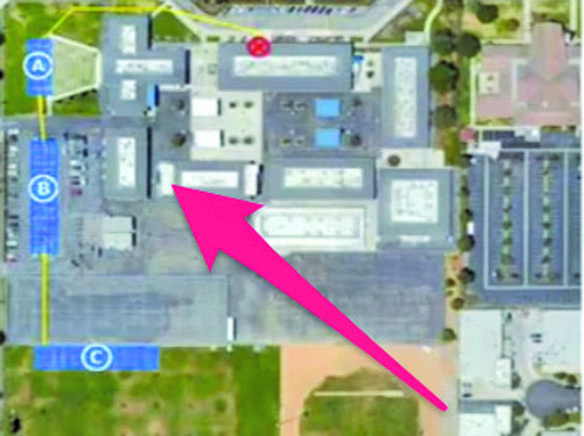
With the public firmly behind “green” energy, the Los Alamitos Unified School District is seriously hoping to be able to enter a contract before the end of the year, Supt. Andrew Pulver said at the board’s workshop last week.
The board has identified a Huntington Beach company, PFMG Solar, as a partner they believe best suited to handle the needs of each site and the district’s overall needs, said Pulver.
Following a discussion with Mike Beverly, senior business development executive with PMFG, Pulver said federal tax credits for solar energy will markedly decrease next year so the time to move forward was now.
“We won’t have solar energy by the end of the year,” said Pulver, but by signing a contract by the end of the year could “maximize savings to the community” for a green energy project.
Pulver insisted there are no “bond dollars” to support the installation of solar equipment, but there will be no upfront cost to the system.
Beverly presented to the board a series of drawings of potential solar arrays at each of the various school sites within the LAUSD system, noting that the drawings were preliminary. Before going through each of the slides, Beverly presented to the board some of the solar solutions they had installed at other educational facilities throughout Southern California.
In general, he said, solar arrays make useful “shade structures,” or “outdoor learning environments,” but he also presented some of the “traditional carport solutions.”
Pulver noted several times in the presentation that although PFMG has worked with C.J. Knowland, the system’s Director of Facilities and other staff to locate the solar arrays, there will be an opportunity to change the locations until December.
Beverly said the site selections were made on a cursory basis and deeper due diligence and community outreach would begin once the district signs a contract.
He confirmed there will be no out of pocket expenses for district to install the equipment, and the system would only be obligated to purchase the power generated by the arrays.
Although there are three pricing models for the solar energy, Pulver said the staff is recommending a 30-year fixed rate. The arrangement may be cost neutral in the first few years, or even a bit higher, they believe the fixed rate would save taxpayers significant amounts of money over three decades.
Southern California Edison, the district’s current provider, “continues to propose rate increases” going forward, said Pulver.
Obviously, the solar arrays will not produce enough electricity to handle the entire baseload for the LAUSD ecosystem, but solar could provide significant savings.
Moreover, Pulver said solar would also work well with a battery storage project that the system had previously committed to support.
In response to questions from board members, Beverly said the company could run at a minimal costs extra conduits to provide for electric car charging and the district could decide who can use them and set the rates for their use.
Also, he said the company would work with the system to reach out to local neighbors of the solar arrays to ensure they are not Intrusive.











